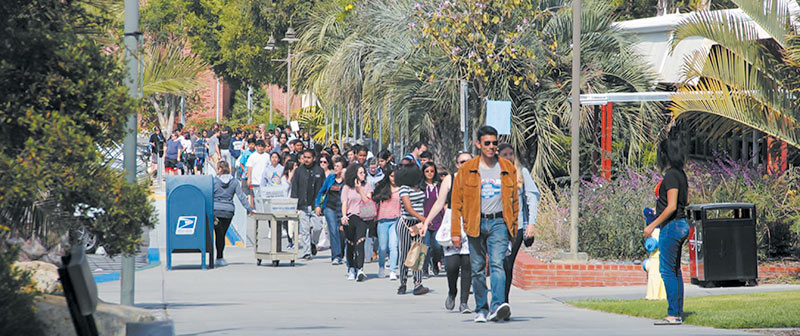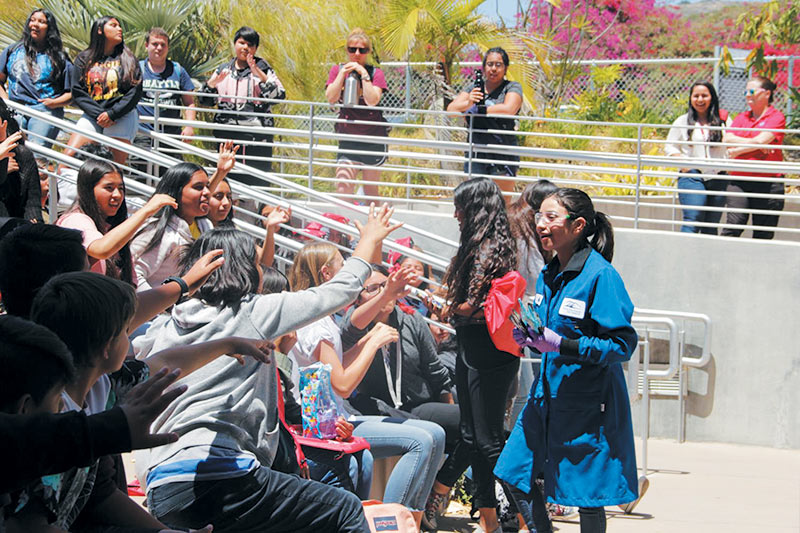A Physics-Filled Field Trip
A Physics-Filled Field Trip
2017–18 SPS Future Faces of Physics Award
Project Lead: Jesus Perez
Chapter Advisor: Justin Perron
Project Summary: Studies have shown that an educational field trip can pique students’ interests and encourage them to learn more about a subject. To spark interest in physics, we brought more than 250 eighth-grade students to the local planetarium for a day filled with physics fun. The students came from nearby middle schools that serve socioeconomically disadvantaged communities with high percentages of underrepresented minority groups. 
In San Marcos, students learn about the solar system and are introduced to the basic concepts of physics in 8th grade. In 2017, our SPS chapter brought 120 eighth-grade students from one local middle school to the planetarium at Palomar College, our local community college. Everyone loved the event, and survey results indicated that the field trip may have influenced how students thought about college majors and careers. We used this Future Faces of Physics Award to open our second annual event to even more students by adding another school.
Our SPS chapter is two-thirds female, and we come from many different cultures. We saw this project as a chance to mentor students from similar backgrounds who most likely don’t have college graduates in their homes. We chose these particular schools because they don’t have the resources to conduct immersive STEM field trips like this, which can expose students to the real-world applications of physics and motivate them to keep studying. Our goal with this project was to show students that people with similar backgrounds are successfully pursuing science, with the hope that this will inspire them to consider pursuing physics or other STEM fields.
This year, we were able to bring 256 students to the planetarium for a full day of physics-themed activities, including a movie on the cosmos inside the planetarium, an interactive plasma demonstration by representatives from General Atomics, liquid nitrogen–themed demos by two chemistry professors, an undergraduate student panel, and a physics and chemistry show to finish off the day. Since the planetarium can hold only 180 people at a time, we hosted the middle schools on two different days.
Everyone involved in the project—the teachers, speakers, volunteers, and especially the students—loved the event. The students really enjoyed the physics demonstrations we performed at the end of the day. The teachers appreciated the student panel the most, as it included middle school alumni who are now STEM college graduates. We hope to repeat the program next year and incorporate more hands-on activities and interactive presentations. Our SPS chapter strengthened relationships among its members as well as between CSUSM, our local middle schools, and our local community college.
This project was a community effort that brought together people from our SPS chapter, both middle schools, the school district, the planetarium, the STEM center at Palomar College, and multiple departments on our campus. Looking forward, we are focused on building up the next cohort of SPS officers. Many of the current officers are graduating, and we want to make sure that the next set of officers values outreach and has the tools and information they need to make this field trip a recurring event.
For more details on this project, visit our award page at spsnational.org/awards/future-faces-physics-award/2018/california-state-university-san-marcos. 
